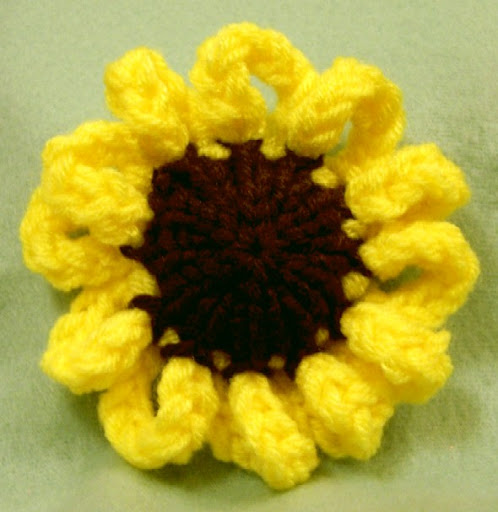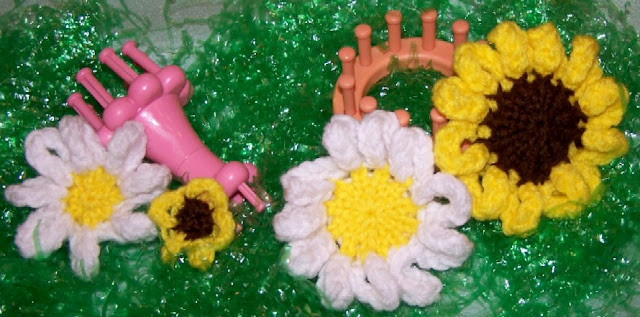
OK, I'm in panic mode. I have so many ideas and so little time to do them. We are getting ready to go on vacation to Argentina and
Uruguay for ten day and since I've been playing with the looms I've let my laundry go to.....well, it's pretty bad. Anyhow, this will probably be my last blog post until I return. Of course, I'm taking a few looms and some yarn - you didn't think I could actually go that long without them, now did you?

Of all the little
loomies I've make, I believe this one is my favorite. The little
Jellybean Basket is made on the
Knifty Knitter flower loom and the handles are done on the five-peg end of the
Knifty Knitter spool loom. The completed basket is about 4.75 inches tall. Of course, the basket design wouldn't be possible if I hadn't made it's
perquisite designs. The
cupcake contributed the flat bottom and the
Easter egg improved on the flat bottom by using the drawstring cast on method.

Also, my treetop angel,
Anabelle, started me using the I-cord for a scalloped edge. The scallops are much more polished in this basket design, because it is integrated directly into one of the rows as a stitch pattern. I considered integrating the I-cord handle directly onto the basket, but decided not to push my luck this time.

I also tried different stitch patterns to create a type of basket stitch (
see the two pilot baskets pictured to the right), but

I decided to stay with a flat knit stitch in the end. Even though the stitch patterns
didn't suit me, The flat bottoms looked pretty good. (
see left).
The basket looked good

without it, but to help keep its shape when adding goodies, I cut the bottom from an eight ounce plastic drinking cup and inserted it into the basket bottom. I used Easter grass, small jellybeans and a
Peeps marshmallow bunny to decorate.
The pattern is listed in the right sidebar under My Pattern Box, or by clicking
here. By using a larger loom and increasing the number of rows, this little basket could easily be made into a larger design. If I were making it larger, I would probably make 3 sets of I-cord for the handle and braid them for reinforcement. You would also need to find a small plastic bowl to insert into the bottom to help maintain the shape. However, I like the little basket just the way it is, because to me it's the small things in life that matter most.
 We returned from Argentina this past Saturday from a wonderful vacation to what has been a disastrous week at home. The terrible events of this past week are too numerous and unbelievable to list and even though I couldn't find the time to knit, I knitted in my mind while riding or driving from one place to another or laying in the bed as my prequel to sleep. Bright yellow daffodils, the fruit one of my mental knitting exercises, finally materialized in yarn form late last night. These little beauties were made on the eight peg end of the Knifty Knitter spool loom. The basic steps to making this flower, which is made from the top down, are as follows:
We returned from Argentina this past Saturday from a wonderful vacation to what has been a disastrous week at home. The terrible events of this past week are too numerous and unbelievable to list and even though I couldn't find the time to knit, I knitted in my mind while riding or driving from one place to another or laying in the bed as my prequel to sleep. Bright yellow daffodils, the fruit one of my mental knitting exercises, finally materialized in yarn form late last night. These little beauties were made on the eight peg end of the Knifty Knitter spool loom. The basic steps to making this flower, which is made from the top down, are as follows:


 OK, I'm in panic mode. I have so many ideas and so little time to do them. We are getting ready to go on vacation to Argentina and
OK, I'm in panic mode. I have so many ideas and so little time to do them. We are getting ready to go on vacation to Argentina and 






